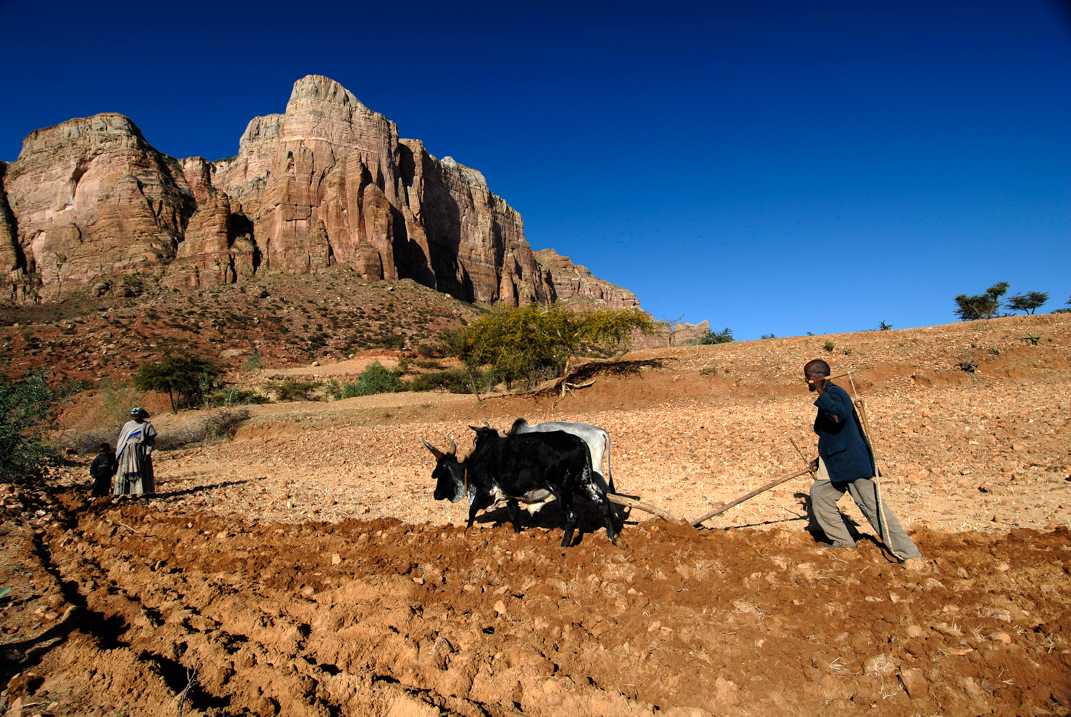The world looks different when viewed from a mountain plateau at 2,500 metres above sea level: the landscape appears almost upside-down.
Since ancient times, this land has been known as a place of mysterious kingdoms and fabulous wealth, as the country of Punt, who, according to the ancient Egyptians, was the progenitor of their gods.
In the north of the country, the kingdom of Axum came into being in the classical era and for almost a thousand years represented a crucial crossroads between Africa and Asia.
The legend tells about the queen of Sheba and king Salomon of Jerusalem, from whose union the first king of Ethiopic dynasty, Menelik, was born.
It was not until midway through the fourth century, however, that we have historical records of the first king. King Ezana converted to Christianity following the arrival of Ferremnatos, and founded one of the oldest Christian nations in the world in the midst of Ethiopia’s most inaccessible mountains.
During medieval times, Ethiopia became a refuge for numerous monks and mystics, traces of whom may still be seen today among the mountains of the north: here are numerous churches and monasteries, some of which were built by carving out the steep sides of the mountains, some others hidden in the small isles of its lakes, the eleven monolithic churches of Lalibela, the over 30 churches of lake Tana, and the over one hundred rupestrian (carved from rock) churches of Tigrai constitute a historical and architectural heritage that is unlike anything else in the world. The origins of Christianity are still visible today .in archaic rites and in the daily life of thousands of monks and faithful.
Further south, along the banks of the river Awash, remains have been found of one of the oldest ancestors of mankind: the skeleton of Lucy (“Australopitecus Afarensis”) date back to 3.8 million years ago.
In addition, the enormous environmental diversity of Ethiopia make this a land of unexpected and magnificent landscapes. The central plateau reaches its greatest heights in the Simien massif (Ras Dajen 4,600 metres a.s.l.); to the east, it slopes off dramatically at its edges sinking to -160 m in the Danalik desert valley. This is one of the most geologically active areas of the world, due to the presence of extensive volcanic activity caused by the Rift Valley.
To the south and west, the land descends more gently, giving way respectively to the extraordinary beauty of the Rift Valley lakes and the immense rain forests of the Kaffa and Jlubabor regions.
These areas, some still isolated from the rest of the world, are the home of tribes and peoples with strong and authentic African traditions. Being nomadic herdsmen with their own traditional rituals. Profoundly artistic by nature, their art is expressed mostly in the adornment of their huts and in the strikingly original decoration of their bodies.
It is clear that the land of Ethiopia has much to tell us about our own past and represents an example of how the world can be, still today, deeply diverse and different from our western civilization. Now this extraordinary legacy has become accessible to culturally-sensitive tourism. The historical and archaeological sites, the great variety of cultures combined with the spontaneous gentleness of the people of Ethiopia, represent an opportunity for travelers to discover a genuinely different world.


